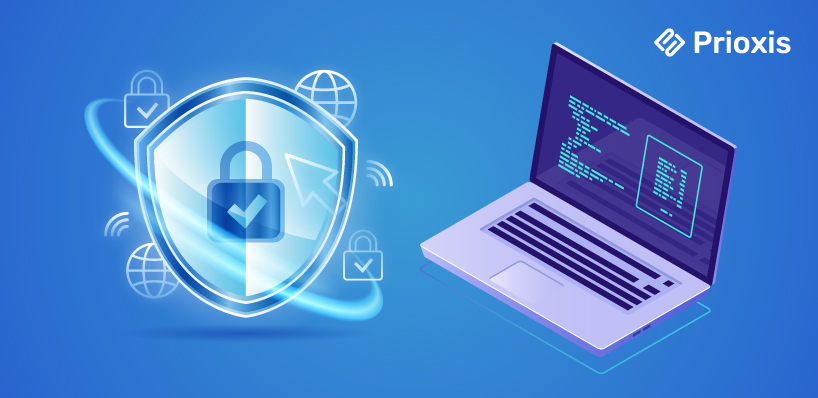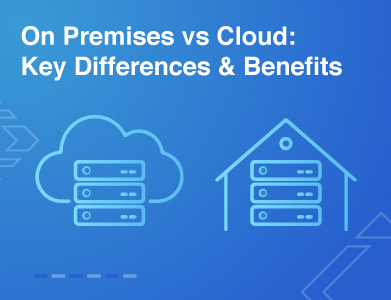Expertise
Let's go back to 2009, when a software engineer named Ryan Dahl saw the limitations of traditional server-side platforms (Apache HTTP Server and Ruby on Rails).
That is when he created an innovative solution built on top of Google's V8 JavaScript engine, known as Node.js. And the rest is history. Today, Node.js is the most popular web framework, with 46.31% of professional developers using it.
Over the years, NodeJS Development Services has been updated with different features, like the introduction of npm, the establishment of the Node.js Foundation, and the merging of Node.js and io.js.
To unlock the full potential of this framework, it is important to learn the Node JS Best Practices. In this blog, you will learn the top Node.js best practices that every developer should know.
Node JS Best Practices for Optimal Performance and Best Security

Strong Authentication Policy
Most of the risks and attacks that can occur in Node.js applications involve malicious actors bypassing user authentication. To avoid this, Node.js Developers must follow these authentication guidelines
- Set rules for password complexity, length, and expiration to enhance password security.
- Implement multi-factor authentication, requiring users to provide a second form of authentication, such as a one-time password (OTP) or biometric verification.
- Implement safeguards like account lockouts, CAPTCHA challenges, and limiting login attempts
- Manage user sessions securely to prevent unauthorized access and maintain session integrity.
- Utilize Scryt or Bcryt libraries over Node.js crypto library
Logging and Monitoring
If you want to have a comprehensive understanding of your Node.js application, logging and monitoring are two of the most important Node JS best practices. By monitoring your logs, you can identify anything suspicious within your application. Important levels to log are info, error, warn, and debug.
You can use frameworks like Winston or Bunyan to log information, including errors, request details, and system metrics. For monitoring your application, you can use application performance monitoring (APM) tools.
Dependency Management
Dependencies refer to external modules or packages that are needed for NodeJS Development Services to function correctly. These dependencies are important components that provide added functionality to the application.
You must manage dependencies properly to ensure the stability, compatibility, and security of your application. This can be done by installing only crucial packages and avoiding unnecessary coupling between modules. You can use tools like npm and yarn for this.
Ensure Secure Deserialization
Secure deserialization is important because Node.js does not offer forms of object serialization. This allows attackers to use serialized objects to transfer malicious payloads. To avoid this, you must implement integrity and user authentication checks to validate the data. Also, sanitize desterilized data to remove any harmful content.
Node.js Developers can also utilize anti-CSRF tokens, custom request headers, the SameSite flag in cookie sessions, and user interaction-based protection for enhanced security.
Setup HTTPs
Setting up HTTPS ensures secure communication between clients and the server. HTTPS (Hypertext Transfer Protocol Secure) encrypts data transmitted over the network, providing confidentiality and authenticity.
Steps to set up HTTPS are:
- Obtain SSL certificates (private key and certificate) for your domain.
- Protect from eavesdropping and man-in-the-middle attacks
- Utilize tools like Let’s Encrypt to obtain SSL/TLS certificates for free.
Run Node.JS as a non-root user
If you run node.js with root access, you open the door to malicious actors that can attack you unexpectedly. This is why you can run it as a non-root user. This ensures that Node.js operates on the principle of least privilege (people only have access that is needed to perform a specific job.)
Additionally, this allows for more control over permissions and access rights, enabling a secure and robust application environment.
Avoid Blocking the Event Loop
The event loop is a continuous running loop that processes asynchronous tasks and events, ensuring that the main thread is not blocked. Blocking event loop can occur when a piece of synchronous code or long running operation prevents event loop from processing other tasks.
This leads to slow server response times, unresponsiveness, and reduced throughput. To avoid blocking the event loop, ensure your JavaScript callbacks complete quickly. Avoid synchronous operations like synchronous file I/O, infinite loops, or CPU-intensive tasks.
You can also bound the input for complex tasks. A bound input can ensure no blocking as it executes against the time-frame of your worst-case input.
Limit Request Sizes to Reduce DoS Attack
A Denial of Service (DoS) attack is a cyber-attack where the attacker floods the production server with internet traffic, making a resource or network unavailable to its intended user.
One way Node.js Developers can avoid this attack is by limiting request sizes. The default limit for requests in Node.js is 5MB. You can further reduce the size by;
- Configuring the 'limit' option in the body-parser package:
The body-parser package enables you to parse incoming request bodies. By configuring the 'limit' option in body-parser, you can restrict the size of payloads your application will accept.
- Using reverse proxies or express middleware to set size limits:
This approach enforces size limits for specific types of content. By setting size limits at the proxy or middleware level, you can control the maximum size of incoming requests based on content type or other criteria.
Implement Error Handling:
You can ensure application performance and mitigate security issues by implementing error handling practices. Here are some of them:
- There are two main types of errors in Node.js: operational errors (runtime problems) and programmer errors (bugs in the code). Handle these two types of errors differently, as they require different approaches.
- Use Try-Catch Blocks for Synchronous Errors
- Leverage Callbacks, Promises, and Async/Await for Asynchronous Errors
- Create a centralized error-handling component or middleware to manage errors across your application.
- When creating and throwing errors, use the built-in Error object, which provides useful information like the error message and stack trace.
- Set up event listeners for the 'uncaughtException' and 'unhandledRejection' events to catch and handle any unhandled errors.
Validate user input:
Cross-Site Scripting (XSS) is a major security threat that can affect your Node.js application. It is a type of security vulnerability that occurs when an attacker injects malicious scripts into a trusted website.
To protect your application from this threat, you need to enhance security by validating user input. For this, you can use tools like DOMPurify to remove potentially malicious content, such as scripts or HTML tags, before processing user input.
Plus, you can incorporate form validation libraries like express-validator to automate the validation of user input in requests. You can also employ context-dependent output filters, like XSS filters. A XSS filter encodes user input based on the context in which it will be displayed.
Read Further: Angular Best Practices
How Prioxis Can Help You in Efficient NodeJS Development
Node.js offers a powerful and efficient solution, but ensuring your application is secure, high-performing, and adheres to industry best practices can be challenging.
As a NodeJS development company, we understand your challenges and are here to help. Our dedicated development team of Node.js experts specializes in crafting feature-rich, responsive online applications that are tailored to your unique business needs.
Contact Us Now to Get Started
Let's discuss how we can bring your vision to life with our top-notch NodeJS development services.
01When can I use Node.js?
If you are building data-intensive applications, it is a good option. NodeJS is usually used for server-side applications.
02Why do professional developers prefer Node.js more?
Node.js is a popular framework among developers owing to its scalability, speed, and efficiency. Moreover, it is also easy to learn.
03Which are the top organizations using NodeJS Development Company?
Companies that have experienced successful results after using Node JS for app development are Netflix, NASA, Trello, PayPal, LinkedIn, Walmart, Uber, Twitter, Yahoo, eBay, and GoDaddy.










